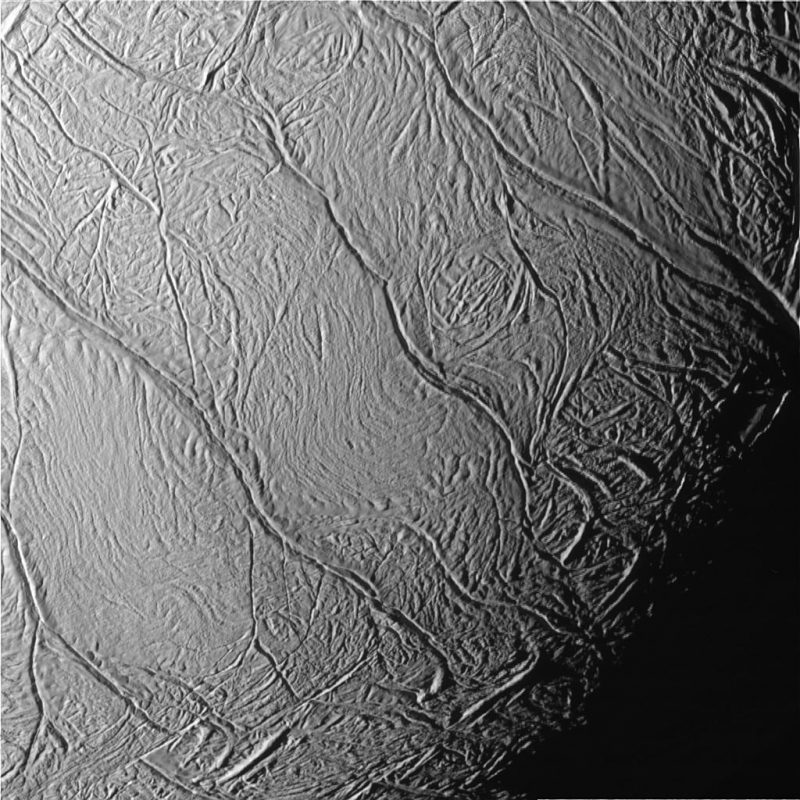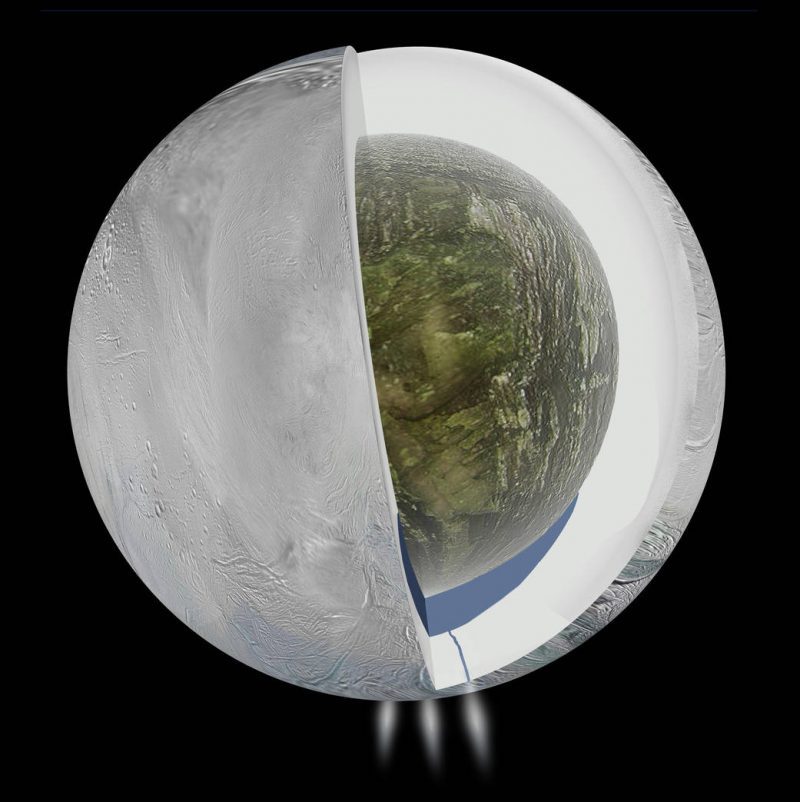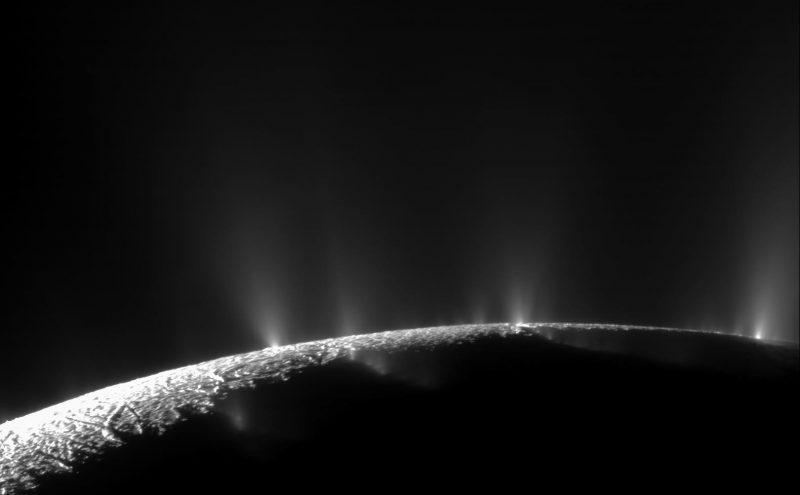
Saturn’s moon Enceladus is one of the most fascinating worlds in our solar system. It has a subsurface water ocean and huge geyser-like plumes of vapor. The geysers erupt at the moon’s south pole through large cracks in Enceladus’ icy crust. These fissures – known to scientists as tiger stripes – have been one of the most distinctive and puzzling features of the moon since the Cassini spacecraft first spied them in 2005. Scientists have wanted to know … how did the tiger stripes form? Why are they parallel? And why are they so evenly spaced? Now they think they have some answers.
A new peer-reviewed study from the Carnegie Institution for Science, published in Nature Astronomy on December 9, 2019, is helping to explain the weird physics behind Enceladus’ curious tiger stripes. The findings were announced by Carnegie Science on the same day.
In a statement about the results, lead author Doug Hemingway said:
First seen by the Cassini mission to Saturn, these stripes are like nothing else known in our solar system. They are parallel and evenly spaced, about 130 kilometers long and 35 kilometers apart [about 80 miles and 20 miles apart]. What makes them especially interesting is that they are continually erupting with water ice, even as we speak. No other icy planets or moons have anything quite like them.
EarthSky 2020 lunar calendars are available! They make great gifts. Order now. Going fast!

Along with Max Rudolph of the University of California, Davis and Michael Manga of UC Berkeley, Hemingway used computer models to try to determine how the stripes form and how they remain in place for so long.
The study addressed questions regarding two odd features of the stripes in particular: why they are only located at the south pole of Enceladus and why they are as parallel and evenly spaced as they are.
As to the first question, the researchers found that the stripes could probably have formed at either the south or north pole. This could have occurred at either pole first, it just happened to be the south pole in this case.
Enceladus’ ice crust is thinnest over the poles, so it makes sense that this is where such cracks would tend to develop. This is due to the fact that the poles experience the greatest amount of deformation caused by Saturn’s powerful gravitational pull. When the water below the ice partially freezes during periods of gradual cooling, the ice crust will thicken from below. This causes pressure to increase until the ice splits open, creating a fissure, or stripe.


The repeated deformation, or stretching of the crust, creates internal heat and keeps Enceladus’ ocean from completely freezing.
But why are the stripes parallel and equally spaced apart? The new study answers that question, Rudolph said:
Our model explains the regular spacing of the cracks.
The researchers think that the fissure called Baghdad Sulcus formed first. It remained open instead of freezing shut again, which allowed ocean water to spew out from the crevasse. Ice and snow – from jets of water that erupted from the ocean below and then froze and fell back down on the surface – had built up along the edges of the Baghdad Sulcus fissure, the weight of which created additional fissures. Rudolph said:
That caused the ice sheet to flex just enough to set off a parallel crack about 35 km away.
The same gravitational tidal effects that helps create the stripes also keeps them open. The fissures are like open wounds in Enceladus’ crust that never heal. The cracks repeatedly widen and narrow again, flushing water out in the process.
This is also partly thanks to Enceladus’ small size; if the noon was significantly larger, its gravity would prevent the fissures from re-opening.

The fissures and water vapor plumes are of great interest to scientists, since they contain salty water from the subsurface ocean. NASA’s Cassini spacecraft was able to fly right through some of the plumes and sample them. It found water vapor, ice crystals, salts, methane and a variety of organic compounds. Cassini wasn’t equipped to detect if there was any life in the plumes, but it did confirm that the ocean is likely habitable by earthly standards. It even found evidence of hydrothermal vents on the ocean floor, thought to be similar to ones in Earth’s oceans. On Earth, they serve as oases for a wide range of microscopic and other life. As Hemingway concluded:
Since it is thanks to these fissures that we have been able to sample and study Enceladus’ subsurface ocean, which is beloved by astrobiologists, we thought it was important to understand the forces that formed and sustained them. Our modeling of the physical effects experienced by the moon’s icy shell points to a potentially unique sequence of events and processes that could allow for these distinctive stripes to exist.
Bottom line: A new study from the Carnegie Institution for Science is helping to explain how the unique tiger stripes on Saturn’s moon Enceladus formed.











